
George Inness Painting Reproductions 4 of 9
1825-1894
American Romanticism Painter
195 George Inness Paintings
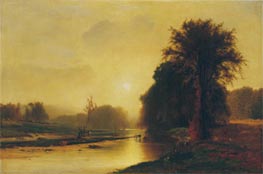
Autumn Meadows 1869
Oil Painting
$766
$766
Canvas Print
$102.90
$102.90
SKU: ING-9155
George Inness
Original Size: 76.2 x 115.6 cm
Metropolitan Museum of Art, New York, USA
George Inness
Original Size: 76.2 x 115.6 cm
Metropolitan Museum of Art, New York, USA
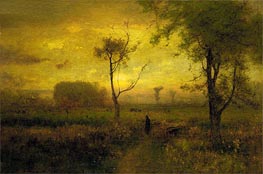
Sunrise 1887
Oil Painting
$704
$704
Canvas Print
$61.81
$61.81
SKU: ING-9156
George Inness
Original Size: 76.2 x 114.9 cm
Metropolitan Museum of Art, New York, USA
George Inness
Original Size: 76.2 x 114.9 cm
Metropolitan Museum of Art, New York, USA
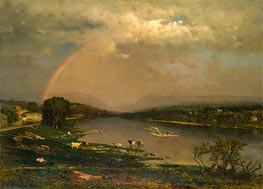
Delaware Water Gap 1861
Oil Painting
$805
$805
Canvas Print
$67.11
$67.11
SKU: ING-9157
George Inness
Original Size: 91.4 x 127.6 cm
Metropolitan Museum of Art, New York, USA
George Inness
Original Size: 91.4 x 127.6 cm
Metropolitan Museum of Art, New York, USA
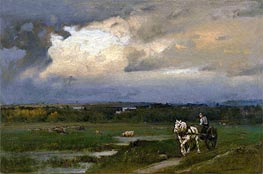
The Rising Storm (Hazy Morning) 1875
Oil Painting
$655
$655
SKU: ING-9158
George Inness
Original Size: 76.5 x 114.6 cm
Boston Museum of Fine Arts, Massachusetts, USA
George Inness
Original Size: 76.5 x 114.6 cm
Boston Museum of Fine Arts, Massachusetts, USA
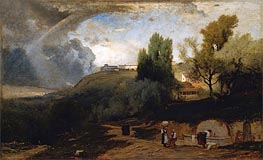
Scene in Perugia 1875
Oil Painting
$750
$750
SKU: ING-9159
George Inness
Original Size: 98.4 x 160.3 cm
Boston Museum of Fine Arts, Massachusetts, USA
George Inness
Original Size: 98.4 x 160.3 cm
Boston Museum of Fine Arts, Massachusetts, USA
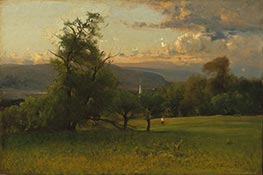
The Church Spire 1875
Oil Painting
$643
$643
Canvas Print
$62.34
$62.34
SKU: ING-9160
George Inness
Original Size: 51.1 x 76.5 cm
Boston Museum of Fine Arts, Massachusetts, USA
George Inness
Original Size: 51.1 x 76.5 cm
Boston Museum of Fine Arts, Massachusetts, USA
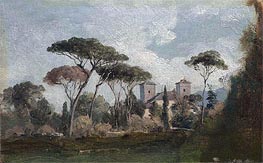
Villa Borghese, Rome a.1857
Oil Painting
$416
$416
Canvas Print
$61.81
$61.81
SKU: ING-9161
George Inness
Original Size: 10.8 x 17.8 cm
Boston Museum of Fine Arts, Massachusetts, USA
George Inness
Original Size: 10.8 x 17.8 cm
Boston Museum of Fine Arts, Massachusetts, USA
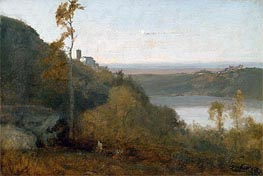
Lake Nemi a.1874
Oil Painting
$472
$472
SKU: ING-9162
George Inness
Original Size: 30.8 x 46 cm
Boston Museum of Fine Arts, Massachusetts, USA
George Inness
Original Size: 30.8 x 46 cm
Boston Museum of Fine Arts, Massachusetts, USA
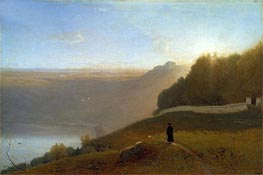
Lake Nemi 1872
Oil Painting
$712
$712
Canvas Print
$61.81
$61.81
SKU: ING-9163
George Inness
Original Size: 75.5 x 114 cm
Boston Museum of Fine Arts, Massachusetts, USA
George Inness
Original Size: 75.5 x 114 cm
Boston Museum of Fine Arts, Massachusetts, USA
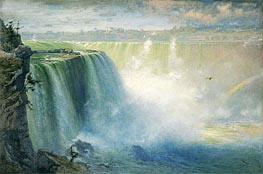
Blue Niagara 1884
Oil Painting
$811
$811
SKU: ING-9164
George Inness
Original Size: 122.8 x 183.5 cm
Boston Museum of Fine Arts, Massachusetts, USA
George Inness
Original Size: 122.8 x 183.5 cm
Boston Museum of Fine Arts, Massachusetts, USA
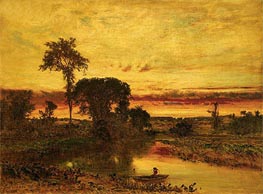
Sunset Landscape, Medfield 1861
Oil Painting
$622
$622
Canvas Print
$61.81
$61.81
SKU: ING-9165
George Inness
Original Size: 71.4 x 101.9 cm
Boston Museum of Fine Arts, Massachusetts, USA
George Inness
Original Size: 71.4 x 101.9 cm
Boston Museum of Fine Arts, Massachusetts, USA
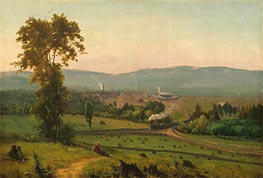
The Lackawanna Valley c.1856
Oil Painting
$752
$752
Canvas Print
$62.85
$62.85
SKU: ING-9166
George Inness
Original Size: 86 x 127.5 cm
National Gallery of Art, Washington, USA
George Inness
Original Size: 86 x 127.5 cm
National Gallery of Art, Washington, USA
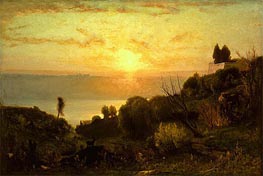
Lake Albano, Sunset c.1874
Oil Painting
$738
$738
Canvas Print
$62.68
$62.68
SKU: ING-9167
George Inness
Original Size: 76.5 x 114.4 cm
National Gallery of Art, Washington, USA
George Inness
Original Size: 76.5 x 114.4 cm
National Gallery of Art, Washington, USA
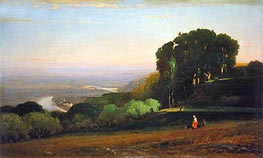
View of the Tiber near Perugia c.1872/74
Oil Painting
$781
$781
Canvas Print
$61.81
$61.81
SKU: ING-9168
George Inness
Original Size: 98 x 161.5 cm
National Gallery of Art, Washington, USA
George Inness
Original Size: 98 x 161.5 cm
National Gallery of Art, Washington, USA
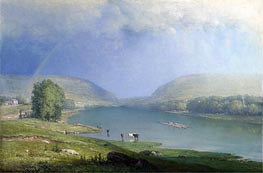
The Delaware Water Gap a.1857
Oil Painting
$846
$846
Canvas Print
$102.68
$102.68
SKU: ING-9169
George Inness
Original Size: 90.5 x 138.5 cm
National Gallery, London, UK
George Inness
Original Size: 90.5 x 138.5 cm
National Gallery, London, UK
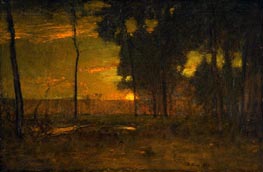
Golden Glow (The Golden Sun) 1894
Oil Painting
$669
$669
Canvas Print
$102.47
$102.47
SKU: ING-9170
George Inness
Original Size: 61 x 91.4 cm
Ball State University Museum of Art, Indiana, USA
George Inness
Original Size: 61 x 91.4 cm
Ball State University Museum of Art, Indiana, USA
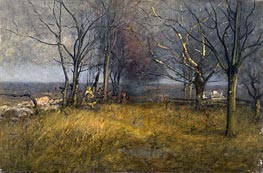
Montclair, New Jersey c.1889
Oil Painting
$562
$562
Canvas Print
$76.58
$76.58
SKU: ING-9171
George Inness
Original Size: 40.6 x 60.9 cm
Bowdoin College Museum of Art, Maine, USA
George Inness
Original Size: 40.6 x 60.9 cm
Bowdoin College Museum of Art, Maine, USA
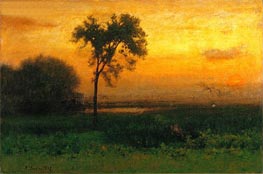
Sunrise 1887
Oil Painting
$686
$686
Canvas Print
$103.56
$103.56
SKU: ING-9172
George Inness
Original Size: 76.3 x 114.5 cm
Brooklyn Museum of Art, New York, USA
George Inness
Original Size: 76.3 x 114.5 cm
Brooklyn Museum of Art, New York, USA
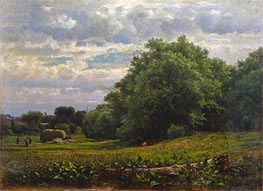
Harvest Time 1861
Oil Painting
$682
$682
Canvas Print
$67.79
$67.79
SKU: ING-9173
George Inness
Original Size: 56.5 x 76.8 cm
Cleveland Museum of Art, Ohio, USA
George Inness
Original Size: 56.5 x 76.8 cm
Cleveland Museum of Art, Ohio, USA
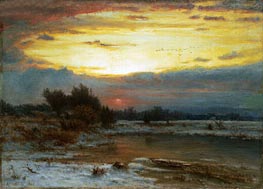
A Winter Sky 1866
Oil Painting
$705
$705
Canvas Print
$68.13
$68.13
SKU: ING-9174
George Inness
Original Size: 56 x 77.5 cm
Cleveland Museum of Art, Ohio, USA
George Inness
Original Size: 56 x 77.5 cm
Cleveland Museum of Art, Ohio, USA
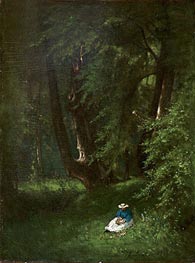
In the Woods 1866
Oil Painting
$448
$448
Canvas Print
$61.81
$61.81
SKU: ING-9175
George Inness
Original Size: 30.2 x 22.2 cm
Cleveland Museum of Art, Ohio, USA
George Inness
Original Size: 30.2 x 22.2 cm
Cleveland Museum of Art, Ohio, USA
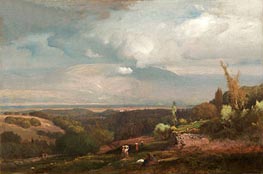
Approaching Storm from the Alban Hills 1871
Oil Painting
$781
$781
Canvas Print
$61.83
$61.83
SKU: ING-9176
George Inness
Original Size: 73.8 x 113 cm
Cleveland Museum of Art, Ohio, USA
George Inness
Original Size: 73.8 x 113 cm
Cleveland Museum of Art, Ohio, USA
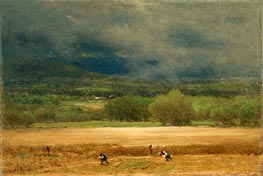
The Wheat Field c.1875/77
Oil Painting
$628
$628
Canvas Print
$61.83
$61.83
SKU: ING-9177
George Inness
Original Size: 50.8 x 76 cm
Cleveland Museum of Art, Ohio, USA
George Inness
Original Size: 50.8 x 76 cm
Cleveland Museum of Art, Ohio, USA
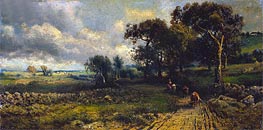
Fleecy Clouds 1881
Oil Painting
$855
$855
Canvas Print
$61.81
$61.81
SKU: ING-9178
George Inness
Original Size: 25.5 x 51 cm
Cleveland Museum of Art, Ohio, USA
George Inness
Original Size: 25.5 x 51 cm
Cleveland Museum of Art, Ohio, USA